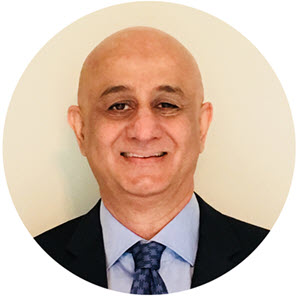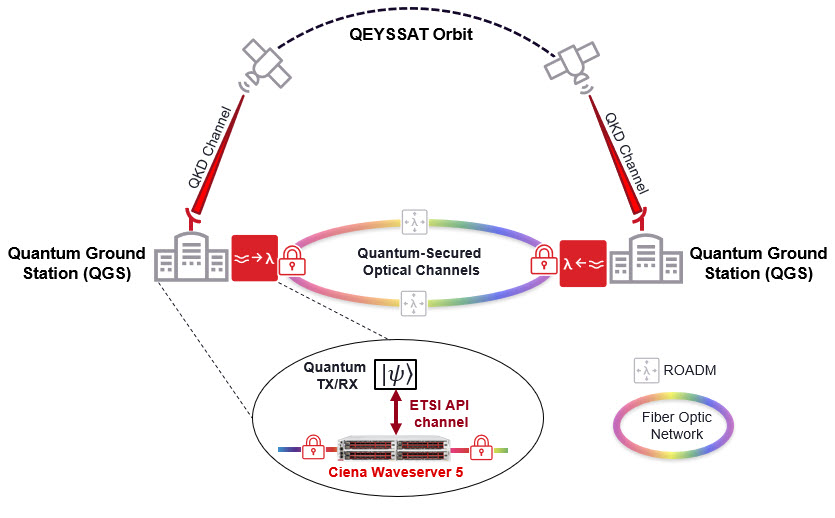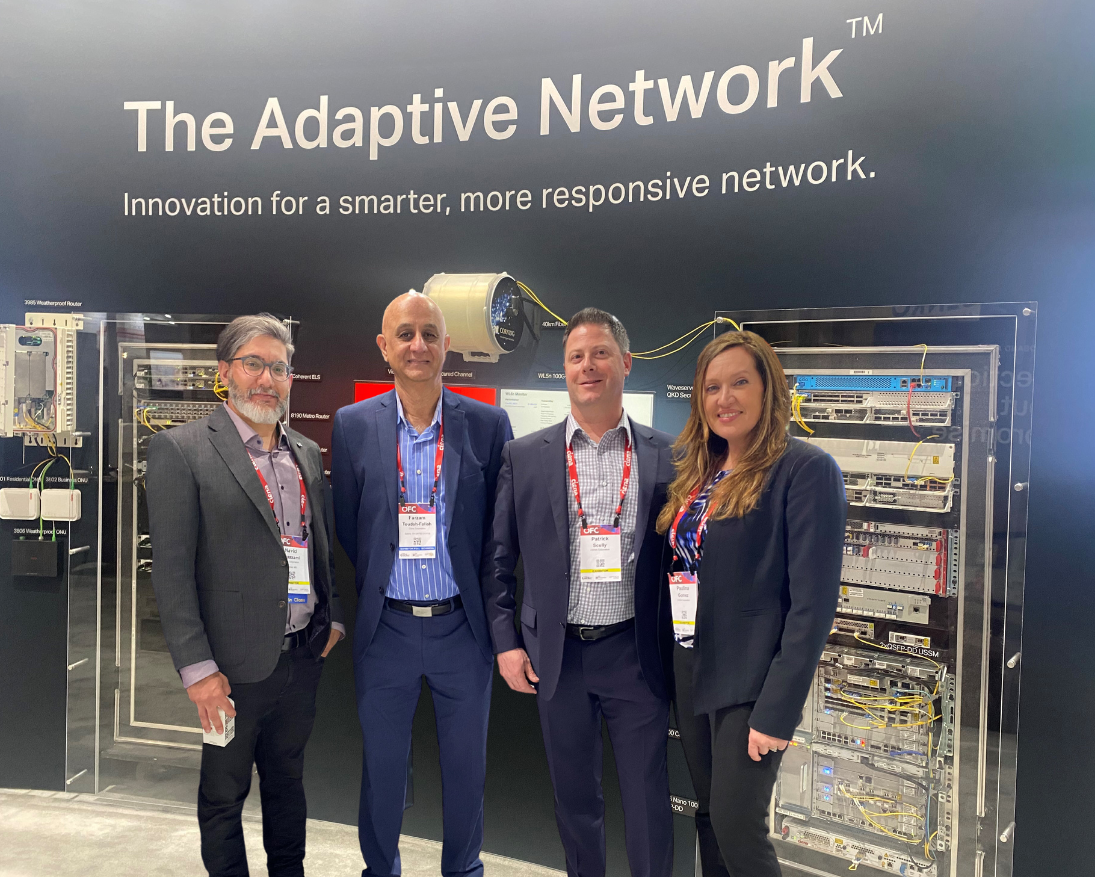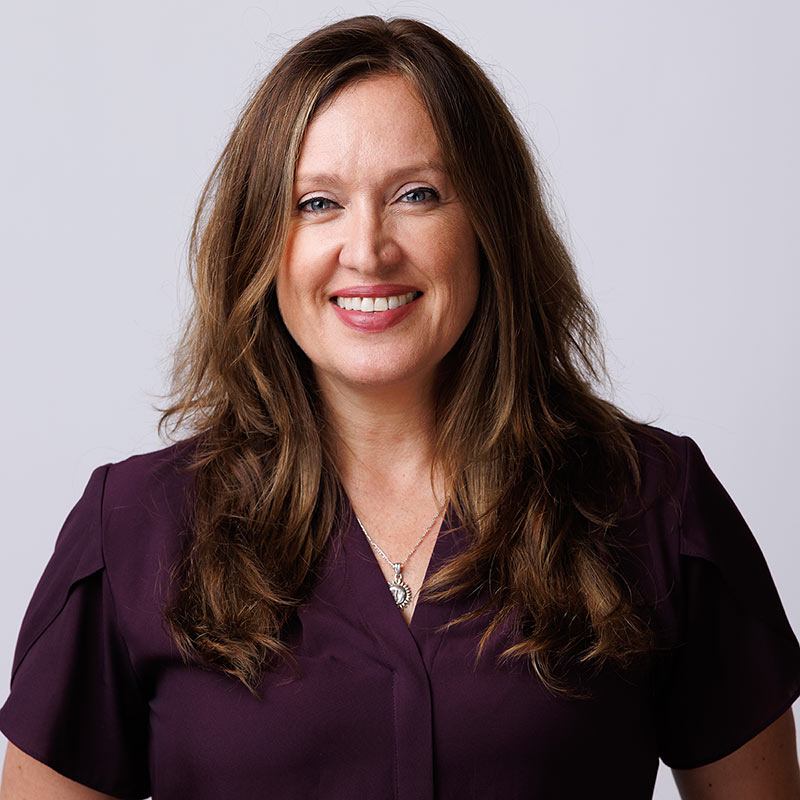What are the latest developments in quantum-secured communications and what could the future hold? Ciena’s Paulina Gomez sits down with Farzam Toudeh-Fallah, R&D Director of Quantum Communications at Ciena, to discuss.
 Farzam Toudeh-Fallah leads Ciena’s Research and Development Quantum Communications team and brings a wealth of knowledge and experience in the areas of quantum and coherent optical communications, expanding over 20 years, going back to his academic and research studies at MIT. His most recent contribution in the field includes collaborating with other scientists from academia and the industry to define the roadmap for quantum communication interconnects, the Roadmap for Quantum Interconnects, published by the U.S. Government.
Farzam Toudeh-Fallah leads Ciena’s Research and Development Quantum Communications team and brings a wealth of knowledge and experience in the areas of quantum and coherent optical communications, expanding over 20 years, going back to his academic and research studies at MIT. His most recent contribution in the field includes collaborating with other scientists from academia and the industry to define the roadmap for quantum communication interconnects, the Roadmap for Quantum Interconnects, published by the U.S. Government.
In today’s world of ever-increasing cyber security threats, network and data security continue to be top of mind. And now, advances in quantum computing are introducing new paradigms when it comes to data security. Ciena participates in the Quantum EncrYption and Science Satellite (QEYSSAT) research project, whose mission is to “study quantum links and Quantum Key Distribution (QKD) for ground-to-space communication with quantum ground stations across Canada and internationally.”
Directly involved in this activity as Ciena’s Principal Investigator is Farzam Toudeh-Fallah who leads Ciena’s Research and Development Quantum Communications team and brings a wealth of knowledge and experience in the areas of quantum and coherent optical communications spanning over 20 years. It’s no surprise that Farzam is busier than ever, but luckily I was able to get his perspectives on the significance of this project, the progress made to date and “what’s coming next” in the area of quantum-secured communications.
Paulina: First, can you explain the importance of ensuring quantum-secured communications?
Farzam: Today, traditional key exchange algorithms are used to securely establish a shared secret key between two parties for the purpose of encrypting confidential information traveling across our networks. It is these key exchange algorithms that are vulnerable to quantum computers when they become powerful enough to break those algorithms. However, the urgent call to make the current communication systems resistant against the threat posed by quantum computers stems from the Harvest Now, Decrypt Later attack model.
In this model, the attackers quietly eavesdrop on today’s communication channels and harvest data that is deemed to maintain or increase in value over time. Essentially, they hold on to the encrypted data, waiting for the day when quantum computers become available that could break today’s key exchange algorithms, thus allowing them to decrypt all the encrypted data. For organizations that handle information that maintains its value over the next 5-10 years, finding options to mitigate this threat is of utmost importance.
Paulina: What options are available for enterprises and government agencies to mitigate this risk?
Farzam: It turns out that quantum-secured communication based on the Quantum Key Distribution (QKD) methodology has been mathematically proven to provide Unconditional Security of critical data with quantum-resistant communication channels. In this approach, two separate types of channels are established: the quantum channel for the key distribution process and the classical channels for data and service operations. The QKD-generated keys are then used to encrypt the communication channels, hence quantum-securing those channels against the threat of quantum computers.
Paulina: What progress has been made to date towards ensuring quantum-secured communications?
Farzam: Much progress has been made in the industry to demonstrate short-distance quantum-secured optical channels within 100kms. Ciena has participated in several engagements successfully demonstrating 800Gbps quantum-secured communications for short distance applications like DCI. These demos showcase Ciena’s Waveserver 5 platform equipped with an ETSI standard API to communicate with different 3rd party QKD devices to establish 800 Gbps quantum-secured optical channels.
While short-distance quantum channels can be established over point-to-point optical fiber links, larger distances require other approaches due to the technological challenges involved. Establishing quantum communications requires the faithful transfer of a quantum state. However, the fidelity of the quantum state is degraded by several contributing factors induced by the propagation medium, be it fiber optics or free space, such as loss and Raman scattering. It turns out that the No-Cloning principle of Quantum Mechanics nullifies the concept of duplicating quantum states, hence precluding conventional amplification in long-distance quantum communications. Basically, this means that the quantum channel established across a fiber optic link cannot be amplified, which directly impacts the deployment of quantum communications over long-distances.
Paulina: What is the role of Satellite Quantum Communications when it comes to ensuring long-distance quantum-secured communications?
Farzam: The challenges towards achieving long-distance quantum-secured communications are the subject of worldwide research. Currently, there are two distinct approaches to addressing long-distance quantum communication challenges:
The first approach is terrestrial, in which instead of amplifiers, quantum repeaters will be installed along the long-distance fiber optic links. It is important to note that the development of a practical long-distance quantum communication link using quantum repeaters for deployment in operational environments is years, if not decades away.
The second approach is based on using a satellite to establish the quantum channel and generating QKD symmetric keys between long-distance ground stations. These keys are then utilized to create quantum-secured optical channels across longer distances. What is promising about this approach is that it has been successfully demonstrated at a distance of 7600 km between Beijing and Vienna. Therefore, using satellites has the potential for deployment in operational environments earlier than the terrestrial approach discussed before.
Paulina: Can you explain what the Quantum EncrYption and Science Satellite (QEYSSAT) Project is all about?
Farzam: The Quantum EncrYption and Science Satellite (QEYSSAT) project is a major satellite quantum communication research project, owned and operated by the Canadian Space Agency (CSA) with science activities being led by the University of Waterloo and Institute for Quantum Computing (IQC). This research project explores the viability of satellite quantum communication for several use cases that include establishing long-distance quantum-secured communication channels and interconnecting quantum computers.
Paulina: What is Ciena’s role in the QEYSSAT project?
Farzam: As an optical communications leader whose technology underpins many of the world’s largest optical networks, Ciena is always innovating to continue to push the boundaries of what is possible. Collaborating with partners is an important element towards helping our customers elevate their defenses against growing cyber security threats in the quantum era – which is why Ciena is engaged in the QEYSSAT research project.
Ciena is a member of the QEYSSAT User Investigation Team, which is a consortium consisting of several academic, industrial and government institutions. The following figure depicts our engagement in this project towards establishing a quantum-secured optical channel between the two Quantum Ground Stations (QGS). More specifically, Ciena’s Waveserver 5 platform will be installed at each of the QGS and will obtain the symmetric QKD-keys generated via the QEYSSAT by establishing an ETSI-API with the QGS Key Management System. These keys will then be used to encrypt a high-capacity optical channel over an existing dark fiber link between the two QGS, hence establishing a long-distance quantum-secured classical optical communication channel between these two locations.

Ciena leads the way for advancing long-distance high-capacity optical communication channels, up to 800Gbps per channel today, and 1.6 Tbps per channel next year. Our engagement in this research project paves the way towards quantum-securing these high-capacity channels for long-distance communications.
Paulina: What is next for Ciena with respect to ensuring quantum-secured communications?
Farzam: We are also investing in research and development for establishing long-distance terrestrial quantum communications. This approach is based on utilizing the concept of quantum repeaters, which is still the subject of intense worldwide research. There are different methodologies proposed for the development of quantum repeaters including Quantum Teleportation based on end-to-end entanglement distribution, One-Way quantum repeaters, Graph-State-based approach, and more. Stay tuned for a blog dedicated to discussing this approach.
After years of research focused on quantum-secured communications, it is very exciting to see real developments and customer engagements in this field – particularly when it comes to short distances. At the same time, it is equally exciting to be involved in the early stages of research that will lead to ensuring quantum-secured communications over long distances as we approach the era of quantum computing.






